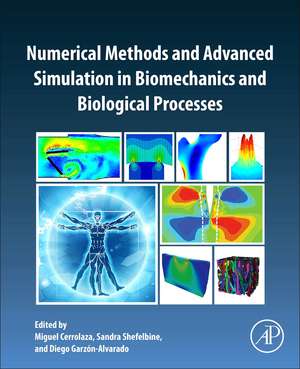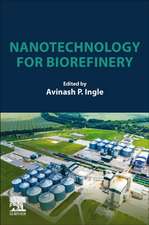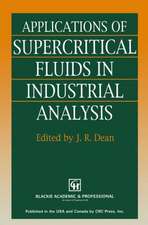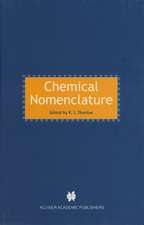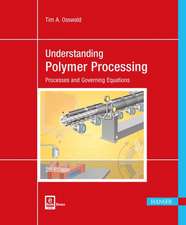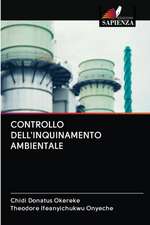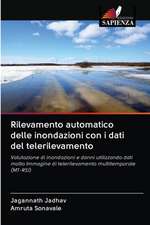Numerical Methods and Advanced Simulation in Biomechanics and Biological Processes
Editat de Miguel Cerrolaza, Sandra Shefelbine, Diego Garzón-Alvaradoen Limba Engleză Paperback – 5 oct 2017
- Provides non-conventional analysis methods for modeling
- Covers the Discrete Element Method (DEM), Particle Methods (PM), MessLess and MeshFree Methods (MLMF), Agent-Based Methods (ABM), Lattice-Boltzmann Methods (LBM) and Boundary Integral Methods (BIM)
- Includes contributions from several world renowned experts in their fields
- Compares pros and cons of each method to help you decide which method is most applicable to solving specific problems
Preț: 938.18 lei
Preț vechi: 1223.63 lei
-23% Nou
Puncte Express: 1407
Preț estimativ în valută:
179.55€ • 186.02$ • 149.84£
179.55€ • 186.02$ • 149.84£
Carte tipărită la comandă
Livrare economică 15-29 martie
Preluare comenzi: 021 569.72.76
Specificații
ISBN-13: 9780128117187
ISBN-10: 0128117184
Pagini: 454
Dimensiuni: 216 x 276 x 27 mm
Editura: ELSEVIER SCIENCE
ISBN-10: 0128117184
Pagini: 454
Dimensiuni: 216 x 276 x 27 mm
Editura: ELSEVIER SCIENCE
Public țintă
Advanced researchers in computational biomechanics, Academic staff and professors of biomechanics/bioengineering courses, Graduate students in bioengineering, biomechanics, engineering mechanics, Companies that have RTD departments devoted to bioengineering and tissue engineering, Research personnel in industrial sectors and research companies involved in bioengineering, biomechanics, tissue engineeringCuprins
1. Discontinuous finite-element model of hydrogels: predicting stiffness of nanofibres
2. Modeling the influence of mechanics on biological growth
3. Finite Element modeling and simulation of the multiphysic behavior of articular cartilage
4. Image-driven constitutive modeling for FE-based simulation of soft tissue biomechanics
5. Finite element modeling of Turing Pattern formation: An application to appearance and location of dentinal tubules
6. A discontinuous Galerkin model for the simulation of chemotaxis processes: application to stem cell injection after a myocardial infarction
7. Application of the Boundary Element Method in bioelectromagnetics
8. BEM in biomechanics: modelling, advances and limitations
9. A particle-finite element based framework for differentiation paths of stem cells to myocytes and adipocytes
10. Numerical simulation of bone cutting: hybrid SPH-FE approach
11. Smoothed Particle Hydrodynamics method and its applications to cardiovascular flow modeling
12. Agent Based Lattice Models of multicellular systems: numerical methods, implementation and applications
13. Multiscale agent-based computer models in skeletal tissue regeneration
14. Off-lattice Agent Based models for cell and tumor growth: numerical methods, implementation and applications
15. Agent-based numerical methods for 3D bioprinting in tissue engineering
16. Coupled Finite Element-Agent Based models for the simulation of vascular growth and remodeling
17. The mechanologic bone tissue remodeling analysis: a comparison between mesh-depending and meshless methods
18. Strong and weak form meshless methods in computational biomechanics
19. The finite volume particle method: towards a meshless technique for biomedical fluid dynamics
20. Multicomponent lattice Boltzmann models for biological applications
21. Lattice Boltzmann models of highly viscous fluids and multicellular self-assembly
22. The Lattice Boltzmann modeling: solving complex flows including biological cells
23. Lattice Boltzmann methods for bioengineering applications
2. Modeling the influence of mechanics on biological growth
3. Finite Element modeling and simulation of the multiphysic behavior of articular cartilage
4. Image-driven constitutive modeling for FE-based simulation of soft tissue biomechanics
5. Finite element modeling of Turing Pattern formation: An application to appearance and location of dentinal tubules
6. A discontinuous Galerkin model for the simulation of chemotaxis processes: application to stem cell injection after a myocardial infarction
7. Application of the Boundary Element Method in bioelectromagnetics
8. BEM in biomechanics: modelling, advances and limitations
9. A particle-finite element based framework for differentiation paths of stem cells to myocytes and adipocytes
10. Numerical simulation of bone cutting: hybrid SPH-FE approach
11. Smoothed Particle Hydrodynamics method and its applications to cardiovascular flow modeling
12. Agent Based Lattice Models of multicellular systems: numerical methods, implementation and applications
13. Multiscale agent-based computer models in skeletal tissue regeneration
14. Off-lattice Agent Based models for cell and tumor growth: numerical methods, implementation and applications
15. Agent-based numerical methods for 3D bioprinting in tissue engineering
16. Coupled Finite Element-Agent Based models for the simulation of vascular growth and remodeling
17. The mechanologic bone tissue remodeling analysis: a comparison between mesh-depending and meshless methods
18. Strong and weak form meshless methods in computational biomechanics
19. The finite volume particle method: towards a meshless technique for biomedical fluid dynamics
20. Multicomponent lattice Boltzmann models for biological applications
21. Lattice Boltzmann models of highly viscous fluids and multicellular self-assembly
22. The Lattice Boltzmann modeling: solving complex flows including biological cells
23. Lattice Boltzmann methods for bioengineering applications
